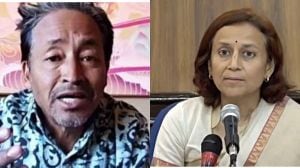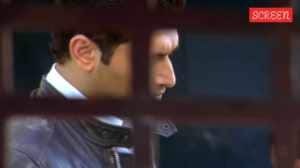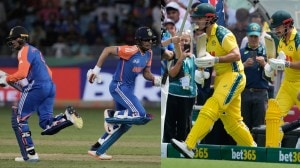With eye on inflation, RBI hints at rise in interest rates
With the central bank re-emphasising that inflation is its enemy No. 1, interest rates are clearly headed upwards. But it’s not time...

With the central bank re-emphasising that inflation is its enemy No. 1, interest rates are clearly headed upwards. But it’s not time—yet—for consumers to pull out calculators and work out EMIs on housing or car loans.
A rate hike will not happen overnight. The Reserve Bank of India (RBI) today opted for a status quo on key benchmark rates but sent out ample signals that a rise in interest rates is around the corner.
To control excess liquidity in the financial system, the RBI’s annual policy for 2005-06 hiked the fixed reverse repo rate by 0.25 per cent to 5 per cent.
Government bonds crashed on a virtual sell-off, triggered by concerns of a possible hike in interest rates, even as Finance Minister P Chidambaram allayed fears of a rise in bank lending rates.
Simply put, the reverse repo rate is the signalling rate at which the RBI mops up funds from banks. A rise in rates not only makes it more attractive for banks to park funds with the RBI—thus sucking out liquidity—it also means the RBI is preparing the ground for a rise in interest rates in the system. Rates have been rising in global markets of late.
Bonds stabilised at lower levels towards the close after Chidambaram indicated that the increase in reverse repo would not ‘‘raise bank lending rates’’ and allayed fears on inflation by promising steps to ensure price stability.
‘‘In the last policy, when everybody expected a dip in rates, we didn’t go for it. It has now solved some our problems,’’ RBI Governor Y V Reddy said.
|
THE BIG PICTURE
|
|||||
|
• Reverse repo rate increased by 0.25% to 5% Story continues below this ad |
|||||
Bankers are generally optimistic about the new RBI direction. ‘‘The central bank remains bullish on growth, but the increase in reverse repo rate signals RBI’s concern to keep inflation under check,’’ said A K Purwar, chairman, State Bank of India.
Reddy maintained basic rates like Bank Rate (BR) at 6 per cent and Cash Reserve Ratio (CRR) at five per cent, indicating that a rise in interest rates will happen only at a slow pace.
The central bank also retained interest rates on savings accounts, NRI deposits, small loans up to Rs two lakh and export credit at the current levels. BR (the rate at which the RBI finances banks) and CRR (the portion of deposits to be deposited with the RBI) are used by the RBI to control interest rates and inflation.
‘‘The stance of the policy is to provide appropriate liquidity to meet credit growth (estimated at 19% in FY06) and support investment and export demand in the economy while placing equal emphasis on price stability,’’ said Deepak Parekh, chairman, HDFC.
The RBI’s latest policy continues the focus on the four primary concerns facing the central bank: inflationary pressures, a global environment of rising interest rates, a widening current account deficit and the need to balance continued credit growth with a tight monetary policy stance.
At the same time, Reddy appears to be concerned about two things—the recent increase in prices of products like cars and consumer durables—and the potential inflation that the impending increase in domestic oil prices is likely to stoke.
On the other hand, the RBI advised banks to revert to focussing on their basic relationship with depositors. As part of this, it has proposed a Banking Codes and Standards Board. “Banks are being asked to refocus on deposit mobilisation and empower the depositors by providing wider access and better quality of banking services,” Reddy said after unveiling the RBI policy.
It has also decided to go for a quarterly review of the monetary policy in order to ensure greater transparency as well as more frequent communication with the markets.
On the macro front, with the backing of buoyant economy and prediction of normal monsoon, the RBI estimated a seven per cent GDP growth for 2005-06 and pegged inflation at 5-5.5 per cent but cautioned its outlook may get moderated by the conditions in the oil market.





- 01
- 02
- 03
- 04
- 05


























